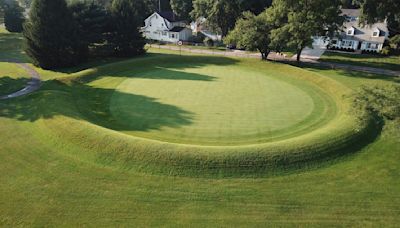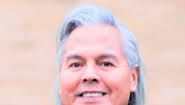Search results
Native American Stories from Yahoo
Learn the origin, synonyms, and usage of the word indigenous, which means native, innate, or belonging to the earliest inhabitants of a place. See examples of indigenous in sentences and related phrases and articles.
Estimates of the population of Indigenous peoples range from 250 million to 600 million. [5] There are some 5,000 distinct Indigenous peoples spread across every inhabited climate zone and continent of the world except Antarctica.
Oct 8, 2023 · What is Indigenous Peoples’ Day? Typically on the second Monday of October, Indigenous Peoples’ Day recognizes the Indigenous communities that have lived in the Americas for thousands of...
- Overview
- Native American culture areas
Native American, member of any of the aboriginal peoples of the Western Hemisphere, although the term often connotes only those groups whose original territories were in present-day Canada and the United States.
Pre-Columbian Americans used technology and material culture that included fire and the fire drill; the domesticated dog; stone implements of many kinds; the spear-thrower (atlatl), harpoon, and bow and arrow; and cordage, netting, basketry, and, in some places, pottery. Many indigenous American groups were hunting-and-gathering cultures, while others were agricultural peoples. American Indians domesticated a variety of plants and animals, including corn (maize), beans, squash, potatoes and other tubers, turkeys, llamas, and alpacas, as well as a variety of semidomesticated species of nut- and seed-bearing plants. These and other resources were used to support communities ranging from small hamlets to cities such as Cahokia, with an estimated population of 10,000 to 20,000 individuals, and Teotihuacán, with some 125,000 to 200,000 residents.
At the dawn of the 16th century ce, as the European conquest of the Americas began, indigenous peoples resided throughout the Western Hemisphere. They were soon decimated by the effects of epidemic disease, military conquest, and enslavement, and, as with other colonized peoples, they were subject to discriminatory political and legal policies well into the 20th, and even the 21st, century. Nonetheless, they have been among the most active and successful native peoples in effecting political change and regaining their autonomy in areas such as education, land ownership, religious freedom, the law, and the revitalization of traditional culture.
Culturally, the indigenous peoples of the Americas are usually recognized as constituting two broad groupings, American Indians and Arctic peoples. American Indians are often further grouped by area of residence: Northern America (present-day United States and Canada), Middle America (present-day Mexico and Central America; sometimes called Mesoamerica), and South America. This article is a survey of the culture areas, prehistories, histories, and recent developments of the indigenous peoples and cultures of the United States and Canada. Some of the terminology used in reference to indigenous Americans is explained in Sidebar: Tribal Nomenclature: American Indian, Native American, and First Nation; Sidebar: The Difference Between a Tribe and a Band; and Sidebar: Native American Self-Names. An overview of all the indigenous peoples of the Americas is presented in American Indian; discussions of various aspects of indigenous American cultures may also be found in the articles pre-Columbian civilizations; Middle American Indian; South American Indian; Arctic: The people; American Indian languages; Native American religions; and Native American arts.
Britannica Quiz
Which English Words Have Native American Origins?
Comparative studies are an essential component of all scholarly analyses, whether the topic under study is human society, fine art, paleontology, or chemistry; the similarities and differences found in the entities under consideration help to organize and direct research programs and exegeses. The comparative study of cultures falls largely in the domain of anthropology, which often uses a typology known as the culture area approach to organize comparisons across cultures.
The culture area approach was delineated at the turn of the 20th century and continued to frame discussions of peoples and cultures into the 21st century. A culture area is a geographic region where certain cultural traits have generally co-occurred; for instance, in North America between the 16th and 19th centuries, the Northwest Coast culture area was characterized by traits such as salmon fishing, woodworking, large villages or towns, and hierarchical social organization.
Are you a student? Get Britannica Premium for only 24.95 - a 67% discount!
Learn More
- INDIGENOUS PEOPLES ARE everywhere. There are more than 476 million Indigenous people in the world, spread across 90 countries and representing 5,000 different cultures.
- INDIGENOUS PEOPLES SPEAK THE MAJORITY OF THE WORLD'S LANGUAGES. Indigenous languages are extensive, complex systems of knowledge. They are central to the identity of Indigenous peoples, the preservation of their cultures, worldviews and visions, as well as expressions of self-determination.
- Indigenous people are more likely to be poor and vulnerable. More than 86 percent of Indigenous peoples work in the informal economy and are nearly three times as likely to be living in extreme poverty.
- INDIGENOUS PEOPLE LIVE SHORTER LIVES AND receive LESS EDUCATION. The life expectancy of Indigenous peoples is as much as 20 years lower than that of their non-Indigenous counterparts.
Oct 19, 2023 · Learn the definition and examples of indigenous people and plants, and how they are different from introduced or cultivated species. Explore the history and culture of indigenous groups around the world.
Dec 4, 2009 · Learn about the diverse and rich cultures of the Indigenous peoples of North America, from the Arctic to the Plains. Explore their history, languages, lifestyles and challenges from pre-Columbian times to the present.








